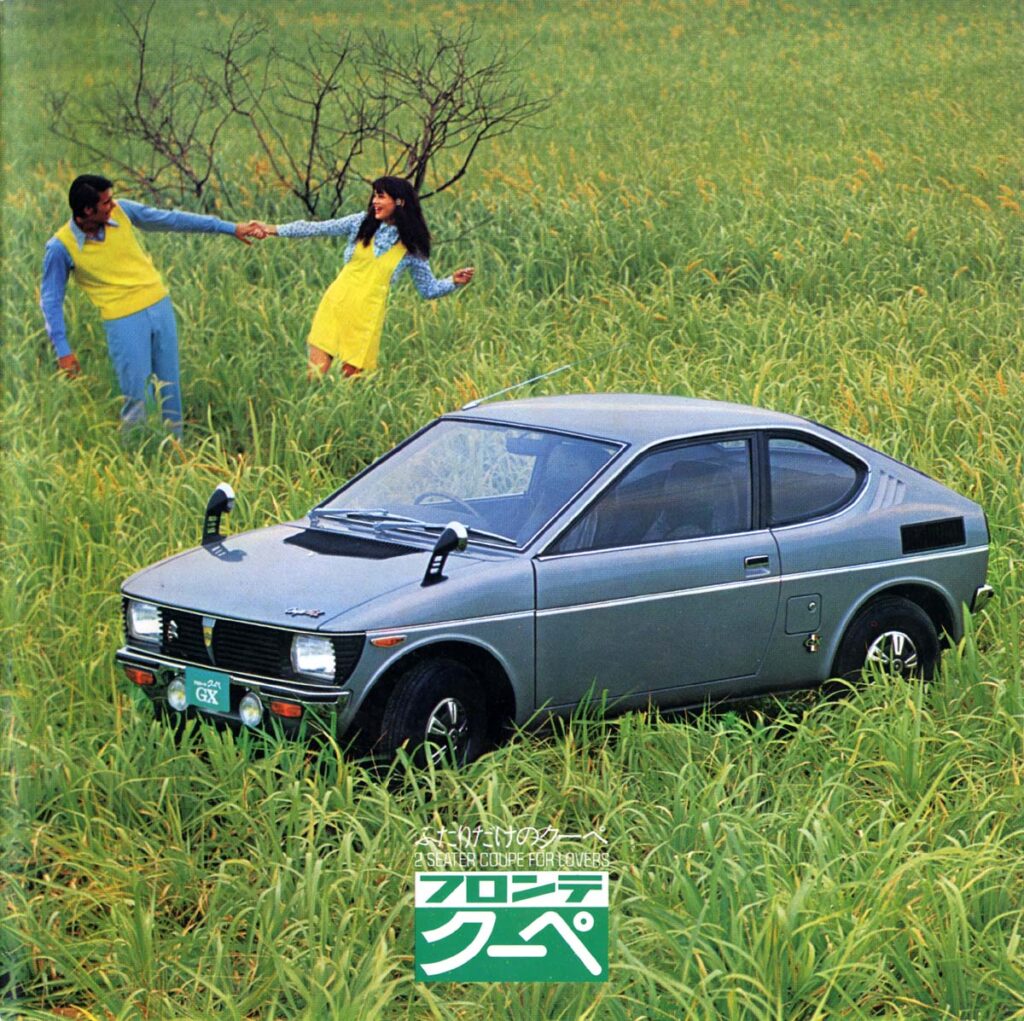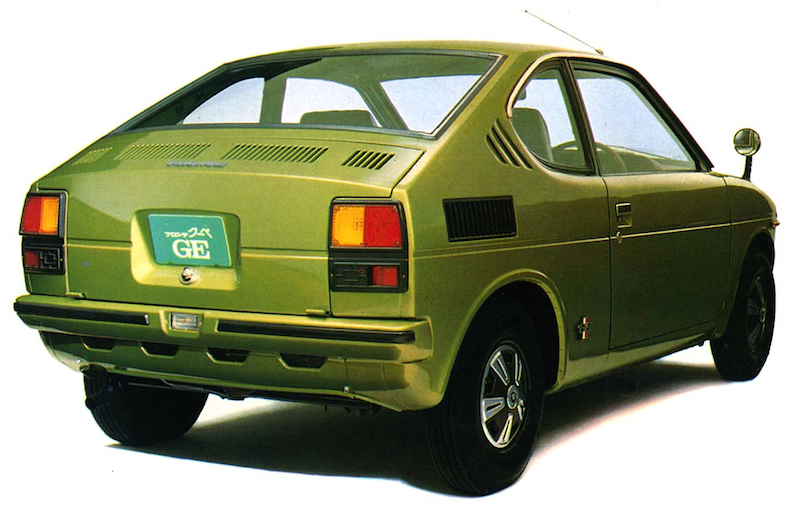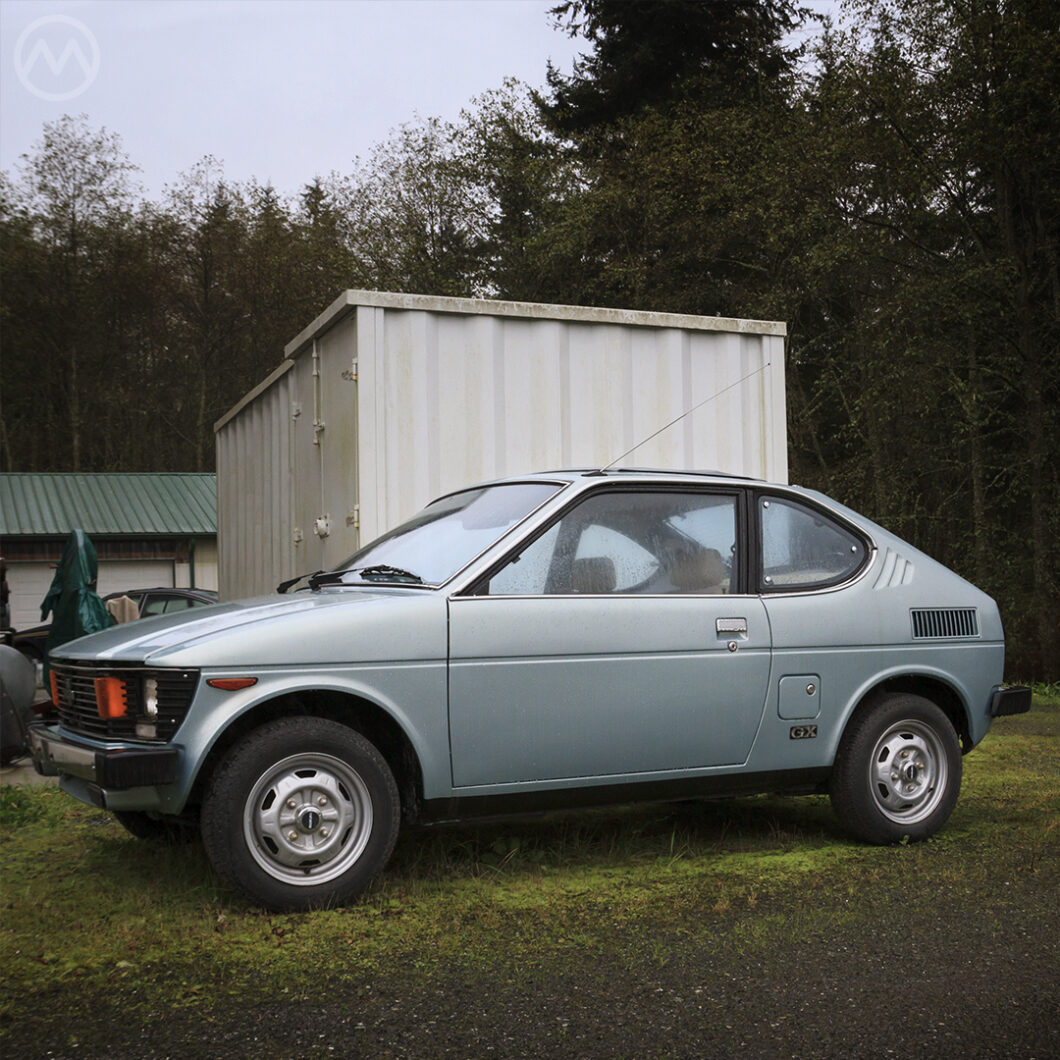We saw this Suzuki SC100 Whizzkid almost a decade ago and haven’t seen another one in the States since, but this little car is much more famous in other countries. Built from 1978 to 1982, before Suzuki began U.S. sales, when it was new but Britons and Europeans loved it and it was one of the earliest Suzuki cars to get global attention and positive recognition from Western media. Those kudos included a wholehearted endorsement from the ever-critical LJK Setright.
In the 1970s, the brand was much more famous for motorcycles, highlighted by Barry Sheene’s two MotoGP championships in 1976 and 1977, and to a lesser extent off-roaders. The first four-wheeled Suzuki to find any real international success was the Jimny, which was even sold in small quantities in the U.S. in the early 1970s by a specialist importer.
Though unknown in America, the SC100 put Suzuki’s cars on the global map, even if its sales numbers (like its dimensions) were much smaller than the Datsun 240Z. With very little weight and a revvy 970-cc overhead cam four in the back, the SC100 was a fantastic and simple recipe for fun. It was also the best (and last) of the company’s rear-engine cars.
Rise of the Rear-Engined Suzukis
Suzuki built its first car in 1955, and early on the cars were sold under the “Suzulight” brand. That first car, the “SF,” was directly inspired by the German Lloyd Alexander, and all of the company’s early cars were front-wheel drive, like the Lloyd line. The SF series sold in small numbers, and the company launched the Suzulight TL Van in the summer of 1959 to replace it. Front drive with a wagon body not dissimilar to the Mini, the Suzulight TL also failed to sell.
While its Motorcycles exploded in popularity worldwide, the Suzulight cars really struggled, even after a Kei version, the Suzulight TLA Fronte, was created in 1962. Seeing the huge success of the Subaru 360, its engineers decided to emulate that car with their next design, which arrived with the 1967 Fronte, powered by a two-stroke 356-cc triple. Despite keeping the front-drive inspired “Fronte” name, it was now rear-engined and rear-drive like the Subaru.

Suzuki’s suspicion that buyers liked the rear-engine Kei formula proved correct, and sales of the coke-bottle-sided Fronte boomed. The lineup was rapidly expanded with a van in 1969, a big restyle (1970’s “Sting Ray Fronte”) and finally a Giugiaro-designed Coupe in 1971. All of which preceded a dramatic restyle for the Fronte line as a whole in 1973. All of these cars, though, were built around the basic building blocks of the 1967 Fronte and its LC10 two-stroke, though a few cars were built for export with a 453-cc version, mainly for south America.
The rear-engine Fronte turned Suzuki into a power player in the Kei car market at home, aided by the Carry Kei truck and, by 1969, the Jimny (the design of which was purchased from the Hope Motor Company), but in the mid-1970s the 360-cc Kei formula had been pushed to its limit, as had the original LC10 two-stroke, which at one point made up to 37 hp.
Giugiaro’s “LC10W” coupe proved quite popular in the early 1970s, but production ended with the 360-cc era in 1976. It would no longer meet the regs for the upcoming 550-cc era and its tiny powerplant was likely to leave it outclassed. Still, Giugiaro’s styling made it one of the most characterful Keis, and Suzuki didn’t want to give up on it. About a year later an enlarged and more practical second-generation model debuted, now with a new name: the Suzuki Cervo SS20.
Cervo and SC100
Two-stroke power continued, with Suzuk’s little 539-cc T5A, and the Cervo soon proved as popular in Japan as the Fronte Coupe had been. But two-strokes were generally unloved in other countries and the Kei formula’s regulations made such cars almost unsalable elsewhere. With an eye on expansion, Suzuki decided to build an export Cervo, one not limited to the 550-cc rules.
Into the chassis was dropped the 970-cc F10A ohc four already fitted to export versions of the Jimny, and a star was born: the SC100. With 46 hp but with just 1,300 lbs to haul around and Porsche-in-miniature handling, the SC100 was fun in the same ways Suzuki’s bikes were. Despite the engine in the back and having just four speeds, the shifter was precise and so were all of the controls.
Yeah, it was very small (too small to be a proper four-seat car despite its back seat), and it could only do about 85-90 mph flat out (if you were lucky), but for European roads that was enough. And you had a pretty good time on anything that wasn’t a superhighway.
Introduced in Amsterdam in 1979, it quickly proved popular in Europe and especially the U.K., where Setright’s endorsement really mattered. In four years, nearly 4,700 SC100s were sold in the U.K., a pretty good number for a novelty sports coupe from a largely unfamiliar brand. The SC100 was in part aimed at South America, which had proven a good early market for the company, and tax rules in Chile led to the creation of another derivative, the 797-cc, F8A-powered SC80, which is a very rare bird now.

Suzuki’s Return to Front-Wheel Drive
By this time though, Suzuki had decided to return to front-wheel drive. Rear-engine cars just aren’t very space efficient and in the Kei race, every inch counted. After mining all it could from the rear-engine design introduced in 1967, the next generation of Suzuki’s small cars would be transverse-engine, front-drive, four-stroke machines, starting with the SS30-series Fronte in early 1979. The Fronte also got a sibling, the Alto, that year which would eventually supplant it.
Despite going front-drive in 1982, the Cervo coupes continued for a long time afterward, though none had the export success of the SC100 and Suzuki never really followed up the product directly. A decade later, Suzuki’s Cappuccino would also prove a U.K. and Setright favorite, and today it gets much more attention than the SC100.
In a way, it’s not surprising that the SC100 hasn’t really been part of the huge influx of JDM imports to the U.S. in the past decade. You could buy one in Japan, and the car was popular there, but it did better and was generally more famous in the U.K. and Europe. It’s also a little older than the Radwood-era cars that are popular with JDM importers, of which the Cappuccino is a prime example.
The SC100 deserves more recognition though, as it helped put Suzuki cars on the map internationally. We spied the blue car at the top of our story at the shop of our friend Jim Simpson way back in 2015.

